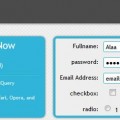jQuery is a lightweight JavaScript library that emphasizes interaction between JavaScript and HTML. It was released January 2006 at BarCamp NYC by John Resig.
Dual licensed under the MIT License and the GNU General Public License, jQuery is free and open source software.
Both Microsoft and Nokia have announced plans to bundle jQuery[1] on their platforms, Microsoft adopting it initially within Visual Studio[2] and use within Microsoft’s ASP.NET AJAX framework and ASP.NET MVC Framework whilst Nokia will integrate it into their Web Run-Time platform.
Features
jQuery contains the following features:
* DOM element selections
* DOM traversal and modification, (including support for CSS 1-3 and basic XPath)
* Events
* CSS manipulation
* Effects and animations
* Ajax
* Extensibility
* Utilities – such as browser version and the each function.
* JavaScript Plugins
Use
jQuery exists as a single JavaScript file, containing all the common DOM, Event, Effects, and Ajax functions. It can be included within any web page by using the following markup:
<script type=”text/javascript” src=”/path/to/jQuery.js”></script>
jQuery has two styles of interaction:
* via the $ function, which is a factory method for the jQuery object. These functions are chainable; they each return the jQuery object
* via $.-prefixed functions. These are functions which do not work in the jQuery object per se.
A typical workflow for manipulation of multiple DOM nodes begins with $ function being called with a CSS selector string, with results in the jQuery object referencing zero or more elements in the HTML page. This node set can be manipulated by applying instance methods to the jQuery object, or the nodes themselves can be manipulated. For example:
$(“div.test”).add(“p.quote”).addClass(“blue”).slideDown(“slow”);
…finds the union of all div tags with class attribute test and all p tags with class attribute quote, adds the class attribute blue to each matched element, and then slides them down with an animation. The $ and add functions affect the matched set, while the addClass and slideDown affect the referenced nodes.
The methods prefixed with $. are convenience methods or affect global properties and behaviour. For example, the following is an example of the map function called each in jQuery:
$.each([1,2,3], function() {
document.write(this + 1);
});
… writes 234 to the document.
It is possible to perform Ajax routines using the $.ajax and associated methods to load and manipulate remote data.
$.ajax({
type: “POST”,
url: “some.php”,
data: “name=John&location=Boston”,
success: function(msg){
alert( “Data Saved: ” + msg );
}
});
… will request some.php with parameters name=John and location=Boston and when the request is finished successfully, the response will be alerted.
Website:
jQuery Website
Powered By: Freelancer ID


Very good read, it thought me alot, many thanks!